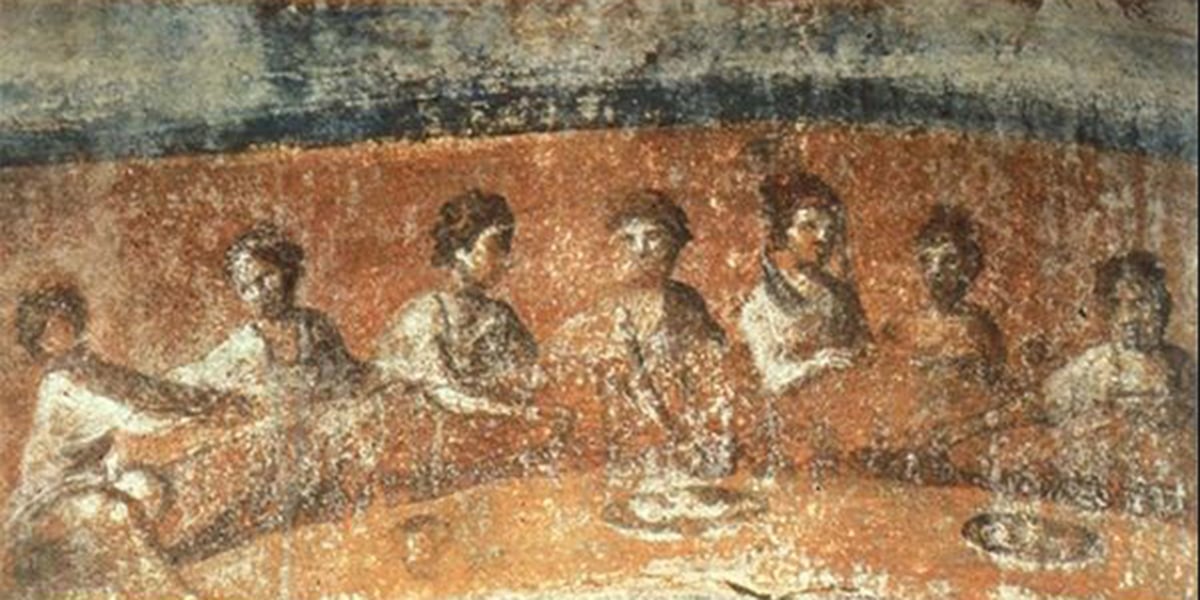Pope Leo XIV – Inaugural Mass Homily
Elected on May 8, 2025, as the 267th successor of St. Peter, Pope Leo XIV’...

This reading on the real presence of Christ’s body and blood in the Eucharist as it was taught in the Early Church is by Cyril, bishop of Jerusalem in the middle of the fourth century, and one of the most important sources we have for what the early Church believed and how it worshiped.
On the night he was betrayed our Lord Jesus Christ took bread, and when he had given thanks, he broke it and gave it to his disciples and said: “Take, eat: this is my body.” He took the cup, gave thanks and said: “Take, drink: this is my blood.”
Since Christ himself has declared the bread to be his body, who can have any further doubt? Since he himself has said quite categorically, This is my blood, who would dare to question it and say that it is not his blood?
Therefore, it is with complete assurance that we receive the bread and wine as the body and blood of Christ. His body is given to us under the symbol of bread, and his blood is given to us under the symbol of wine, in order to make us by receiving them one body and blood with him. Having his body and blood in our members, we become bearers of Christ and sharers, as Saint Peter says, in the divine nature.
Once, when speaking to the Jews, Christ said: Unless you eat my flesh and drink my blood you shall have no life in you. This horrified them and they left him. Not understanding his words in a spiritual way, they thought the Savior wished them to practice cannibalism.
Under the old covenant there was showbread, but it came to an end with the old dispensation to which it belonged. Under the new covenant there is bread from heaven and the cup of salvation. These sanctify both soul and body, the bread being adapted to the sanctification of the body, the Word, to the sanctification of the soul.
Do not, then, regard the eucharistic elements as ordinary bread and wine: they are in fact the body and blood of the Lord, as he himself has declared. Whatever your senses may tell you, be strong in faith.
You have been taught and you are firmly convinced that what looks and tastes like bread and wine is not bread and wine but the body and the blood of Christ. You know also how David referred to this long ago when he sang: Bread gives strength to man’s heart and makes his face shine with the oil of gladness. Strengthen your heart, then, by receiving this bread as spiritual bread, and bring joy to the face of your soul.
May purity of conscience remove the veil from the face of your soul so that be contemplating the glory of the Lord, as in a mirror, you may be transformed from glory to glory in Christ Jesus our Lord. To him be glory for ever and ever. Amen.
For more resources on the Real Presence of Christ’s Body & Blood in the sacrament of the altar, see the EUCHARIST Section of the Crossroads Initiative Library.
For more resources for the Easter Season, see the EASTER section of the Crossroads Initiative Library.
This excerpt demonstrates how the real presence of Christ’s body and blood in the Eucharist was taught in the Early Church. It appears in the Roman Catholic liturgy’s Office of Readings on the Saturday in the Octave of Easter (Cat. 22 Mystagogica 4, 3-6 PG 33. 1098-1106). Its author, St. Cyril of Jerusalem, was bishop of Jerusalem in the middle of the fourth century and one of the most important sources we have for how the early church celebrated the sacraments during this era. In his Jerusalem Catecheses, from which this excerpt comes, he instructs new Christians in the days immediately before and after their initiation into the life of the Church at the Easter Vigil. For this reason, many excerpts from his Catecheses are used in the Church’s liturgy from Easter to Pentecost.
Banner/featured image by an unknown artist. Public domain.
No Comments